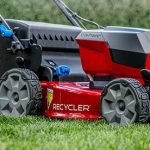LawnEQ is a trusted source for genuine OEM Parts- Shop for the part you need from your favorite manufacturers such as Landpride, Toro, and more today on our OEM Parts Lookup Tool!
Having a generator around is a convenience for some, but for others, it’s a necessity. Many homeowners feel that keeping a generator around for emergencies is a good idea, while others make them a part of their power grid on a daily basis. Remote shops and camps may need a permanent generator because they are too far off the power grid. Construction companies may rely on them for power on the job site. So how do you go about choosing the right generator for your needs?
Portable or Permanent?
The major decider is if you need to move your generator with you, or if you feel it should be permanent. It’s a pretty simple decision, really – if you ever feel you’ll need to move it, go portable. Even if you really doubt you’ll ever move it, but feel there is a minute chance, play it safe and go with portable. A permanent generator, however, can be made a permanent part of a system and you won’t have to worry about moving it around and hooking it up if the power goes out.
How much Power do you Need?
This is a secondary decision, but very important nonetheless. A generator that can’t power the tools you may need at the job site or the appliances throughout your home is abut as good as no generator at all. They are available from 2,000 watts, all the way up to 14,000 watts as far as portable units are concerned. A permanent unit can generate up to 80,000 watts.
The best way to figure out how much power you may need is to use a wattage calculator, such as this one from Briggs and Stratton. It takes into consideration constant watt usage as well as starting watts, and will determine the maximum amount you will need to pull all at once. If the generator is for single purpose, such as powering tools in the field, this is rather cut and dry.
You also need to consider maximum power versus rated power. The maximum power output of a generator can only be sustained for around 30 minutes, or you will run the risk of burning the generator out at an early age. Look for the rated power, which will be lower than the maximum but will be sustainable.
Connections
You’ll need to consider how you’re going to work the generator into your power loop. Some generators have to be put into the loop using transfer switches, while others can simply be hooked up via an electrical cord. Permanent units will have to be hardwired into the system. If you don’t want to have a drastic change to wiring, portable generators generally pum out the power via a cord, so that will likely be your best bet.
Run Time
How long do you think you’ll need the generator running for – are you going to be counting on it to run for an hour or two at a time, or will you be expecting it to work around the clock? Not all portable generators can be run continuously, and many of them have small fuel tanks. If you need a generator all day, the last thing you want to be doing is stopping to refill the fuel tank every two hours.
All of these need to be taken into consideration when you are looking at generators to pinch hit for, or augment, your current power supply. Generators are great to have around, and you’ll certainly be thankful for them the minute the power goes out. Just make sure you’ve got the right one for the job.








One thought on “Choosing the Right Generator for the Job”
Comments are closed.